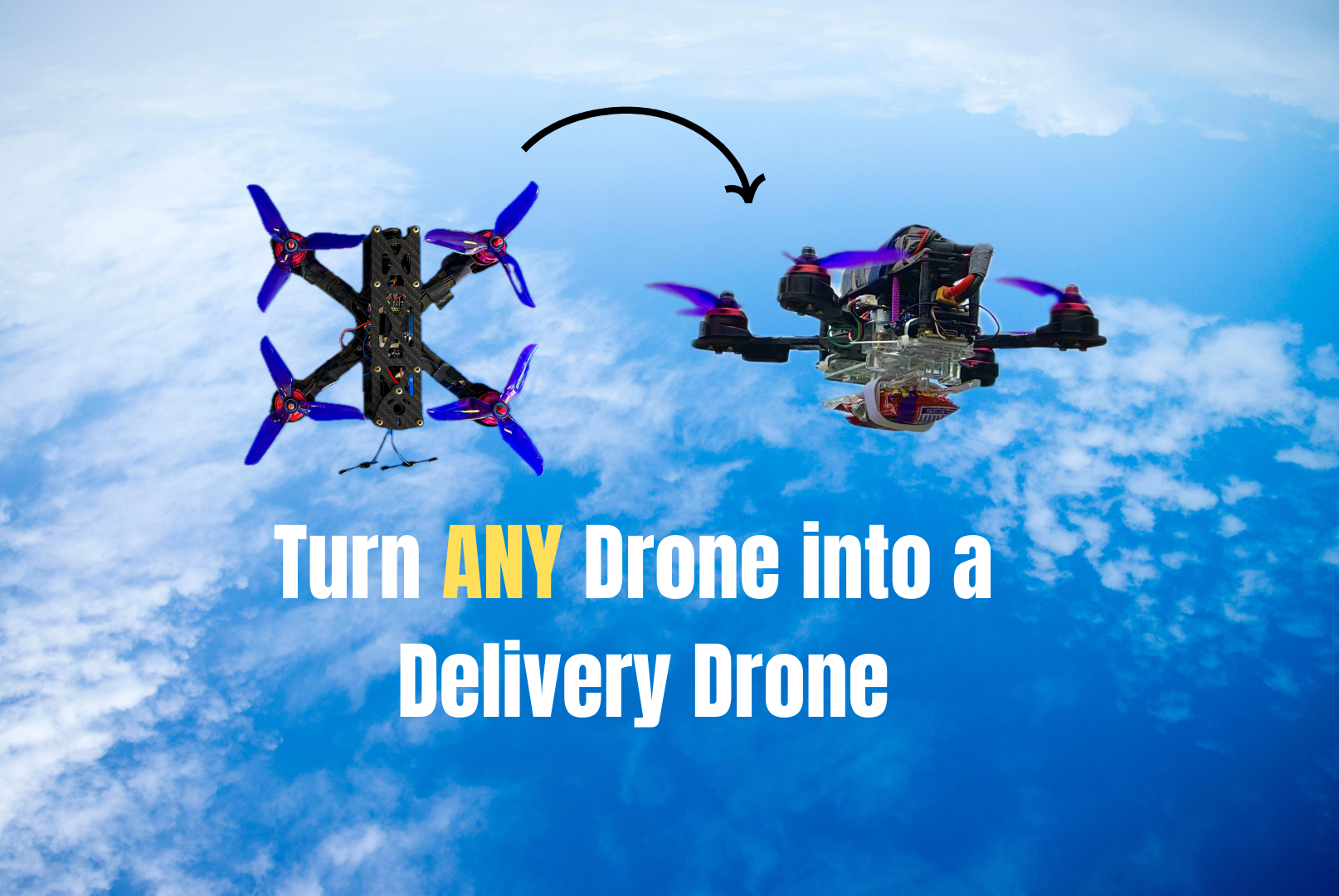-
Turn Any Drone Into a Delivery Drone
01/02/2025 at 11:38 • 0 comments![]()
We're living in a new era where everything is evolving at a rate that humanity has never seen before, and because of this, everyone is chasing the next BIG thing. With companies like Amazon, Zipline, UPS and the like investing heavily on the future of parcel delivery, delivery drones, it makes it seem out of reach for a normal person like you and I to ever get their hands on one 😢.
But, let's say that we change that 💡. Today I'll show you how you can build your own Delivery Drone 📦
Supplies
![]()
For this project, the only pre-built thing that you should have on hand is a drone which you have access to it's Flight Controller (FC). The entire build of the drone is outside the scope of this project, but there's so many sources online to build a drone that you won't struggle to find the help that you need. Alternatively you could just buy a drone
Here's a list of what you'll need to build your delivery drone :
Software:
- Ultimaker Cura (or any other slicer)
- Betaflight Configurator
- Fusion 360 (eligible students, educators, and qualifying educational institutions should have free access to it) (optional)
Equipment:
![Supplies Image]()
- Access to a 3D printer (if you don't have your own, check with your local library, or college. I used one at a makerspace at my University)
- PLA Filament (any colour is fine, I chose White)
Supplies:
- Soldering Iron
- Soldering Wire
- Wire Strippers
- Electrical Wires (Male - Male)
- Multimeter (One that has a continuity tester on it)
- Precision Screwdriver Set
- Electrical Tape
- Pliers
- Zip-ties
Components:
- Flight Controller (Compatible with betaflight)
- DC Gear Motor
- ESP32 Firebeetle 2
- DC-DC Buck Converter 7-24V to 5V
- ELRS-Nano Receiver (any receiver using an ELRS protocol)
The plan of execution for this project can be divided into two main categories:
- Electronics – How do we communicate with the drone to trigger the drop?
- 3D Design and Printing – What components can be used to facilitate the drop mechanism?
Now, to build the delivery drone, we need to follow a couple of steps, but the key question is what those steps actually are... But with all problem solving, we just need to ask ourselves a couple of questions that will guide us in the quest to turn our drone into a delivery drone⚡️.
Electronics
You: "How will the drone know when to drop the package?" 🤔💭
Me: "We’ll need to tell it when!☝️🤓"
You: "🧍♂️ Obviously, dude. But how do we actually do that?"
Me: "Okay, so most standard drone controllers have extra buttons that aren’t used during flight—they're just lying around, doing nothing right?💡"
You: "Yeah..."
Me: "Why not assign one of those buttons to trigger the package drop?"
You: "Hmm, that's kinda smart! But how do we actually do that? 🫡"
Me: (chuckling) "Alright, here’s the gist. The transmitter sends a signal to the receiver about the state of every channel, basically all the switches and buttons on the controller. The receiver then passes this signal to the flight controller, right?"
You: "Mm-hmm 🧐"
Me: "What if we tap into that signal and decode it? By using a powerful microcontroller, like an ESP32, we can read all the transmitter’s channel values. Then, we assign one of the unused channels to trigger the drop. When that button is pressed, the ESP32 sends the command to release the package."
You: "Bingo! I think we’re onto something!"
3D Design and Printing
You: "Okay, but what mechanism should we use to actually drop the package? 🤨"
Me: "🫡 Good question. We could use a simple string to hold the package, but then we’d have to deal with it swinging mid-air... not ideal."
You: "Yeah, it’s like we’d need a way to 'stick' the package to the drone until the moment it needs to drop."
Me: "Exactly. We’ll need a more stable design. I’ve got a few ideas… 🧙♂️🪄" (stares dramatically into the distance)
Let's continue🏃♂️💨...
Read more

Iloke-Alusala's pages
I am a guy who likes building anything that comes to mind. Currently I have drones and ML on my mind


